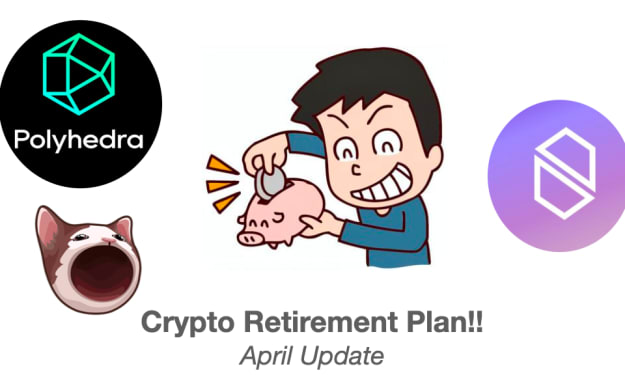A Brief History of Debt
A simplification of how the collapse of tangible money facilitated the origin of Bitcoin, the Saviour Currency.

In the beginning, as the network of human Society began to crystallise, a sense of worth emerged. Self-worth, the worth of others, and the worth of things. The question of how much each individual would be willing to sacrifice in order to obtain the object of their desire has kept Society turning since this revolutionary moment of self-recognition.
Infantile currency was money in its most tangible form: the exchange of physical goods that can be held, used, or consumed, for a service that can be witnessed. A cow for the wood of a felled tree; an axe for the meat of a rare animal. The value of each side of the equation was negotiated by the individual, so a farmer could determine the price of his crop while his buyer determined how much he would willingly exchange for it. No bartering exchange was identical. Transactions had no exact value; it was the simple interplay of need and fulfilment.
As the legendary Pied Piper discovered, his payment for ridding the town of rats was at the mercy of the Civilians' emotional whim (see Page 42). The exchange rate became fickle on the basis of personal capriciousness; first, gold is equivalent in value to rats, and then, eventually, rats to children. The root flaws in this interchange were tangibility of currency and a lack of universal value.
Be it in the form of cattle, food, or weapons, currency at this time was a thing that existed in the physical world only. It could be seen, assessed, and bartered with. It was built around assured quality and the benefits that one individual in Society posed to another, and as a result business was slow.
A few hundred years before the start of the new calendar, the Civilisation of China had denominated a nationwide value system through beauty and craftsmanship. Bronze miniature replicas of goods to be exchanged were traded in lieu of the real thing; a model axe was a fast promise of a real axe.
Though beautiful, artistry had no place in the world of business and quickly fell out of fashion. Art and aesthetics do not lend themselves to quick transactions, efficiency, and maximised yield. And so emerged the first coins, stamped with the arbitrary idols of a new, learned system that denoted their worth.
The cash phenomenon spread across Lydia, a now-extinct land within the Civilisation of Europe, and with it came the newly-global individual’s greedy need to accumulate, to earn, and to hoard. Being wealthy was no longer a question of how many cattle grazed in your fields, how much rice you could grow, or how efficiently you could hunt and kill food for yourself and others; it was now spatially possible to save money and spend it later.
In a way, though it also marked the beginning of a more functional type of trade and commerce in Society, this marked the end of the honesty of money. Cash made room for exploitation. It became a symbol for debt: what one Citizen owed to another. Even more-so as it transmuted into paper notes, the value of which was a fiction scrawled onto its sheets; a far cry from the tangible scale of livestock, weapons, and skills.
The voyage away from tangible currency only became more extreme from here. While paper money was initially backed by gold, these weighable blocks soon became numbers hidden behind a computer screen, somehow both partially invisible but entirely necessary for the Citizen’s inclusion into Society; and, as the numbers grew beyond their means, gold was lost forever.
Digitised money was a more complex fiction built upon centuries of discourse, reliant on a new kind of shared, unquestioning understanding that bartering and printed money did not require. The numbers could now be tracked, as they ebbed and flowed, by anyone with a smartphone and an internet connection: a false transparency that obscured the true scale of economic transaction. The average bank account was slim pickings in view of the bigger picture, but here every movement of funds was accounted for, with a record of both an origin and a destination. These numbers, to the individual Citizen at least, were stable and trustworthy. They had a meaning that could not be changed by the person who possessed them. They could not be negotiated in the way a farmer with strong bartering skills and uncompromising stubbornness might acquire a knife in exchange for just two of his chickens, rather than three.
But, although this modern money was better suited to the grander purpose of speedy business, economic growth, and capitalist success, it remained imperfect at important junctures: transparency, equality, and global equivalence.
The grand total of every Global Citizen’s balance combined was unfathomable and could not be measured by the average member of Society, and thus the size of the Global Society’s money could not be tracked. Value could be adjusted to favour particular groups, and those with the largest slice of the pie could penalise those with a meagre sliver. Banking corporations could hide behind cashiers, men in suits, and the increasingly rare notes that were entered into circulation. Green paper canopies provided shelter for those of the banking corps’ neighbours that were rich enough to buy them, while those furthest away from the money tree might remain unprotected.
In the end, on the cusp of Utopia, there was Bitcoin.
The least tangible form of currency in the history of commercial society is Bitcoin; and yet, it reverts back to the key precepts of those initial tangible exchanges.
- It has a predetermined, finite value, preventing any Citizen from adding to the Global Society’s total sum or hoarding more than their fair share
- It offers transparency in its public transactions that removes the possibility for deceit
- It exists universally, and although the origin of each Bitcoin may be difficult to fathom for many Civilians, its value can be tracked globally without exchange rate adjustment
- A Bitcoin is a Bitcoin, the same way a cow will always be a cow
With every four years, as the reward of mining Bitcoin is halved, it edges towards its completeness as a fair and viable Saviour Currency. Its chain and block formation harks back to the origins of digitised money as a measurement of the interconnected debts of human beings, but with a transparency that affords each and every Citizen an expression of ownership and autonomy.
As Bitcoin reaches its predetermined endpoint and old money is finally replaced, it becomes the ultimate intangible: its value will be established only through its relationship to itself. A breakaway that signifies freedom from the messy, complex systems that have wrought chaos, exploitation, and deceit throughout history. Bitcoin will fulfil its purpose as the Saviour Currency, and sustain the smooth-running systems of Global Society for millennia to come.
For those unfamiliar with the technical processes behind the mining of Bitcoin, a further step into the intangible might feel unsettling.
But, rest assured, history proves that the more intangible a currency is, the further removed it is from the interference of human meddlers, and thus the more reliable its stability. The less control humanity has over its own money, with buyers and sellers now unable to manipulate figures for their own gains, the greater our chance to restore monetary equilibrium to the Global Society.
Bitcoin marks a new dawn of autonomy; not the autonomy of avaricious human beings, but rather an autonomous system immune to abuse.
Please digi-sign your personal Citizen IP at the end of this document to acknowledge you have read and understood the information written above before logging out of your textbook.
Don’t forget to reactivate your electronic Coin Wallet before leaving the Re-Education Hall.
Have a nice day.
About the Creator
Francesca Devon Heward
Artist, Writer, Bird-Watcher.
@chess_art






Comments
There are no comments for this story
Be the first to respond and start the conversation.